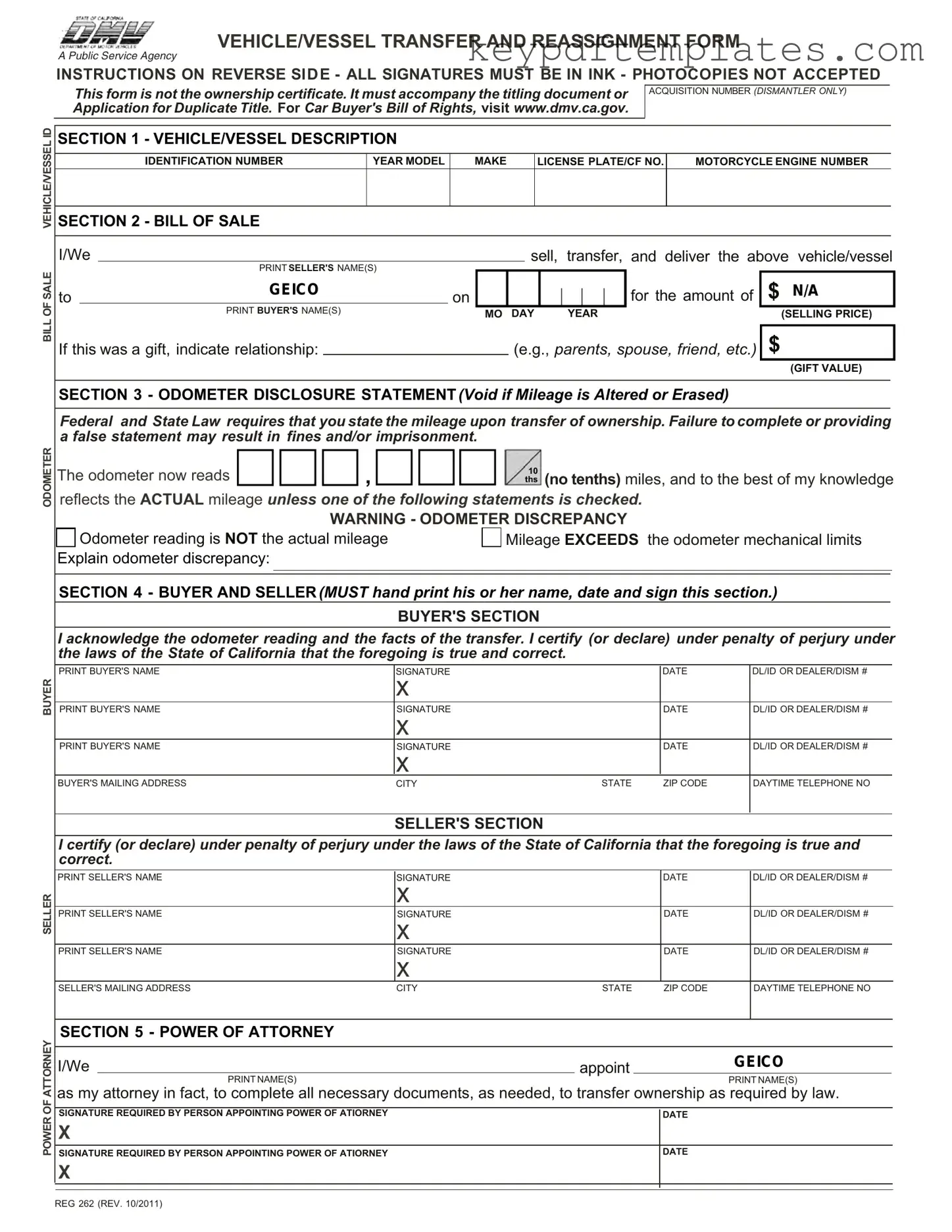Get California Fotm Reg 262 Form
The California Form Reg 262 is a document used for the transfer and reassignment of vehicles and vessels. It is important to note that this form does not serve as the ownership certificate; instead, it must accompany the title or an application for a duplicate title. Proper completion of this form ensures a smooth transfer of ownership and compliance with state regulations.
Modify Document Online
